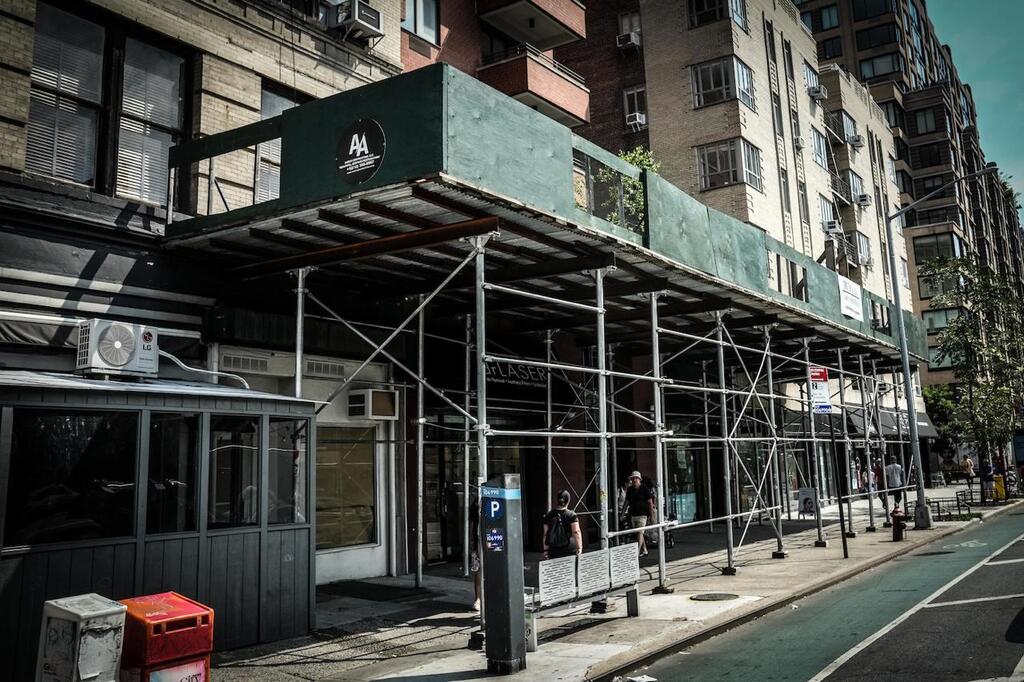When you think of "New York," iconic images like the Statue of Liberty, the Empire State Building and a gooey slice of cheesy pizza at Joe's Pizza in the West Village might come to mind. But if you ask a true New Yorker what really symbolizes the city, they'll quickly point to the ever-present scaffolding. These structures have adorned the city’s buildings for years, like an extemporaneous, unsightly addition to the urban landscape.
According to New York City statistics, if all the scaffolding were connected, it could stretch from Manhattan to Montreal or span the entire length of the Grand Canyon. As of Monday, new data reveals that these structures not only mar the city’s appearance but also cost it significantly. A recent urban study shows that businesses in the city lose between $4,000 and $9,500 each month because of scaffolding.
The difficulty of leasing properties in scaffold-heavy areas is compounded by the poor outward appearance of businesses – after all, who wants to dine at a charming bistro that looks like it’s under construction? Passersby often overlook these storefronts, mistakenly thinking they're closed. Consequently, even the best pizza in the neighborhood remains unnoticed.
But the problem goes beyond aesthetics; it’s a societal issue. Restaurants and bars bear the brunt, and small businesses that form the city’s vibrant fabric are collapsing. People are losing jobs, and neighborhoods are slowly losing their bustling character that were previously embedded in their DNA.
Businesses in the city lose between $4,000 and $9,500 each month because of scaffolding
Many blame the scaffolding for making the city streets look less like those of a world-renowned metropolis and more like lines in an IKEA warehouse. While these temporary structures were meant to be short-lived, they have become permanent fixtures, with the city seemingly resigned to living under their metal and wood shadows.
In the past, scaffolding signaled impending change – a sign that improvements were on the horizon, with buildings set to shine in modern and stylish facades. Now, they evoke mixed feelings of frustration and acceptance, reflecting the city’s long history of regulations and the challenges of a metropolis that never stops – not even for bureaucracy.
There are over 8,500 scaffolding structures citywide, used not just for pedestrian protection from falling building parts, but also as a legal ruse. Building owners use them to maintain a perpetual "renovation" status, avoiding municipal regulations that require actual facade repairs.
The issue began over 40 years ago after a tragic 1979 incident when falling building parts claimed the life of a 17-year-old Columbia University student. The event jolted the city into enacting strict legislation requiring periodic inspections of facades on buildings six stories or taller, necessitating scaffolding to protect pedestrians. Over time, this complex system has spawned a multibillion-dollar scaffolding industry. Initially erected for temporary protection, these structures often remain to save money, serving no real purpose and becoming a prolonged urban nuisance.
Tired of the status quo, the city has begun to fight back. Mayor Eric Adams launched the "Take Down the Sheds" campaign, an ambitious effort to remove as much scaffolding as possible from the streets. Since the beginning of the year, nearly 300 kilometers of scaffolding have been dismantled.
The city targeted the most persistent structures, including the oldest shed in Harlem, which stood at 409 Edgecombe Avenue for over 21 years and became an attraction. The city also introduced an interactive map showing the locations of all the scaffolding. For structures that must remain, the city encourages decoration with local art, such as projects by ArtBridge, which adorn the grey-green scaffolds with colorful murals and photographs.
Until these efforts bear fruit, when you’re in New York, it’s worth looking up – not to admire the stunning skyline but to avoid bumping into yet another scaffold stubbornly clinging to the urban landscape.




